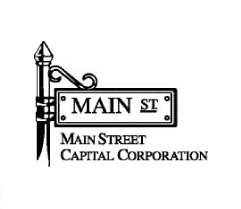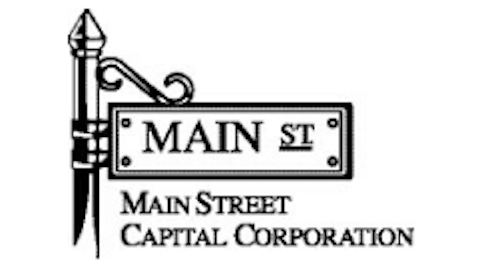It almost goes without saying that the biggest threat to BDC profitability is movement in interest rates—and not just in one direction. With interest rates collapsing over the past several years, investors of all types have been forced to chase riskier assets for yield. This means that new competitors have emerged in the form of hedge funds and other investors seeking to finance lower-middle market and middle-market businesses.
Triangle Capital Corporation (NYSE:TCAP), for example, lists such competition as a major risk factor, saying:
“We operate in a highly competitive market for investment opportunities…competitors may have a lower cost of capital and access to funding sources that are not available to us…We may lose investment opportunities.”
Conversely, an increase in interest rates would increase the cost of borrowing for BDCs, potentially reducing net investment income margins while hurting the value of existing securities held on their books. Main Street Capital Corporation (NYSE:MAIN) agrees, listing it as a major risk factor, saying:
“Changes in interest rates may affect our cost of capital and net investment income…significant increase in market interest rates could increase our cost of capital, which would reduce our net investment income. Also, an increase in interest rates available to investors could make an investment in our securities less attractive than alternative investments, a situation which could reduce the value of our securities…”
Both competition and interest rate changes are large risks to the cohort, but like mREITs, a healthy and functioning capital market environment is also necessary. Oftentimes, BDCs look to the equity markets to raise additional capital, but there is a catch: this can only be done when the equity issuance price is greater than net asset value (NAV). Thus, if BDCs are trading at less than NAV, raising equity becomes impossible without special regulatory permission.
BDCs also encounter the same risk as any other investor—poor investment decisions. Such is why we at Valuentum strongly believe in evaluating a management team’s investment philosophy and style when considering ideas in this industry. We also like to take a look at some of the large portfolio holdings to see if we can gather some additional information on risk. Some management teams may be a bit more aggressive than we’d like, especially considering the amount of leverage inherent in the business model.
Why is the Sector under Pressure?
In the previous section on BDC risks, we extensively explored interest rate risk. In our view, the increased volatility and upward movement in the 10-year Treasury yield can be held responsible for much of the downward pressure on high-yielding equities, particularly the spread-sensitive sectors like BDCs. Since the cost of BDC debentures (the loans given to BDCs) are priced as a spread over the 10-year Treasury, we’ve seen mostly low rates during the past several years, allowing BDCs access to low cost capital. At the same time, the “hunt for yield” (increased competition) has depressed yields on all sorts of securities, including “junk” debt. In March, the yield on non-investment grade debt fell below 5%.
The story for BDCs when interest rates rise can be ugly. Costs of borrowing rise, but so do the yields on debt. This could be a net-neutral event, assuming costs go up at the same rate as market yields. However, a parallel shift in the yield curve doesn’t always happen, and sometimes the cost of funds can go up by a greater magnitude than yields, which would result in continued spread compression.
Investors are also starting to worry about repayment (not pre-payment) risk in the event of higher interest rates. If there is a reversion to higher interest rates, borrowers (holdings in BDC portfolios) may have a more difficult time making interest payments on any new debt issued, negatively impacting overall default rates (the loss rates of BDC portfolio constituents could increase). Ultimately, the industry could be staring down an environment of tightened spreads and higher default rates (of portfolio constituents), which would adversely impact profitability.
Which BDC is Best Positioned?
The entire BDC industry will be challenged by increased uncertainty in interest rates. Still, our favorite firm in the industry remains Main Street Capital Corporation (NYSE:MAIN), even though it trades at a premium to some of its peers. We like the company’s relatively conservative investment philosophy which focuses on senior secured debt rather than equity and junior debt.
Valuentum also likes Main Street Capital Corporation (NYSE:MAIN)’s management team, which holds a strong percentage of shares outstanding, giving them ample skin in the game and incentive to keep the firm’s cost structure low. We love when management’s interests are aligned with those of long-term shareholders. CEO Vincent Foster spent years working in capital markets for an accounting firm before starting Main Street’s predecessor. We think Foster understands the deal landscape as well as any CEO in the space, and the majority of his net worth is dependent on Main Street Capital Corporation (NYSE:MAIN)’s success.
While Main Street Capital Corporation (NYSE:MAIN) doesn’t have the highest dividend of the cohort, we think its yield could be among the least risky (not safest). We like the firm’s focus on senior debt instruments, and it does not have to rely on exiting equity positions to make dividend payments. Most competitors have higher costs associated with portfolio management, and Main Street tends to have a conservative investment mix. Further, since the company doesn’t have the same ambitious yield as some of its some competitors, management won’t be pressured into low-quality investment opportunities to support the yield.
Triangle Capital Corporation (NYSE:TCAP), like Main Street, trades a premium to net asset value as investors give a solid management team additional weighting in the valuation. However, Triangle Capital Corporation (NYSE:TCAP) takes on riskier subordinated and 2nd lien notes, that while boosting the yield, create a riskier portfolio. Although the company has done a wonderful job of managing its portfolio thus far, we’d still prefer Main Street due to its like risky portfolio of (mostly) senior secured debt. Looking forward, we’re not very bullish on Triangle Capital Corporation (NYSE:TCAP)’s capital appreciation prospects. Shares trade at a hefty premium to net asset value, and we are not forecasting great earnings growth.
Valuentum’s Take
Investing in a BDC is a lot like investing in a private equity firm—investors must judge the managers, look at the risk profile of the portfolio companies/structure, and the investment style. Although interest rate changes remain a large risk going forward, we doubt there will be a spike that the industry is unable to handle. However, near-term upward rate pressure could lead shares of BDCs to fall.
The article The Dangers of BDCs originally appeared on Fool.com and is written by RJ Towner.
RJ Towner has no position in any stocks mentioned. The Motley Fool has no position in any of the stocks mentioned. RJ is a member of The Motley Fool Blog Network — entries represent the personal opinion of the blogger and are not formally edited.
Copyright © 1995 – 2013 The Motley Fool, LLC. All rights reserved. The Motley Fool has a disclosure policy.




